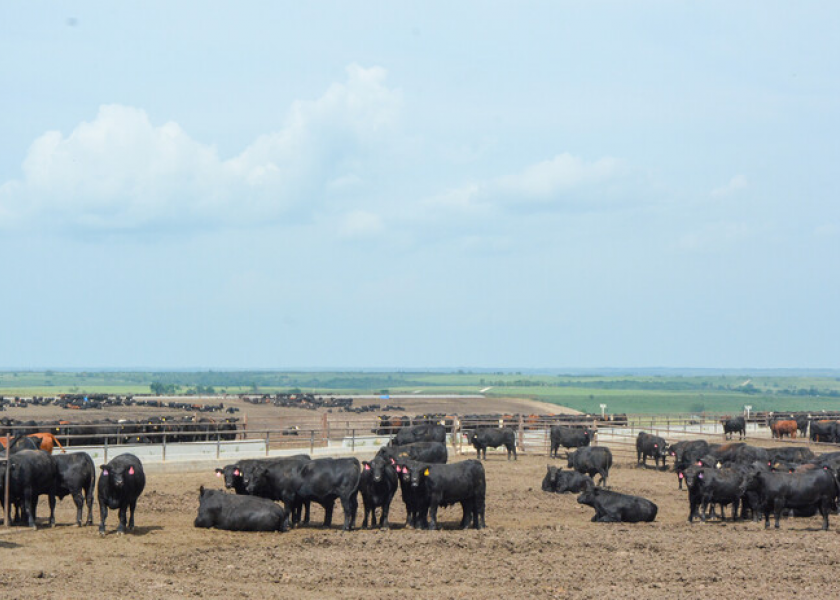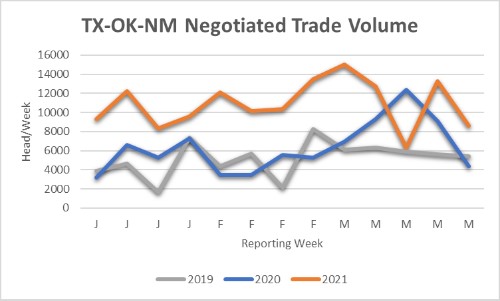NCBA Reports On Q1 Voluntary Price Discovery Framework

The following letter was sent from NCBA president Jerry Bohn to all members.
March 2021 marked one year since the declaration of a national emergency due to COVID-19. Nobody could have predicted then the serious impact the pandemic would have on our nation, the economy, or within the cattle markets. As states begin the process of fully re-opening, I am hopeful that the worst of this crisis is behind us. Although the business environment for cattle producers has improved since March 2020, the volatility caused by the virus continues to impact our industry.
To improve the business climate for cattle producers, further work is needed in the area of price discovery. Last October, you received a letter from Marty Smith announcing NCBA’s Voluntary Approach to Achieve Price Discovery in the Fed Cattle Market. This framework, sometimes called the “75% Plan,” was developed by NCBA’s Live Cattle Marketing Working Group Regional Triggers Subgroup as directed by the Fed Cattle Price Discovery policy (M 1.10) adopted at our 2020 Summer Business Meeting. As a reminder, the voluntary approach requires the subgroup to analyze the program’s performance at the end of every quarter. The subgroup has completed its evaluation of the first quarter of 2021, and I write today to report their findings to the members of NCBA.
After evaluating the weekly USDA-AMS negotiated trade data in the five major cattle feeding reporting regions, the subgroup has determined that a major trigger was tripped during the first quarter of 2021. According to our member-approved framework, if another major trigger is tripped during any of the remaining quarters this year, NCBA will pursue a legislative or regulatory solution to increase negotiated trade as determined by our membership.
Under the “Negotiated Trade” silo of the 75% Plan, one minor trigger is assigned to each of the regions. The subgroup evaluated the weekly negotiated trade volumes for each cattle feeding region and determined that the Iowa-Minnesota and Nebraska-Colorado regions exceeded their thresholds under the 75% Plan during all of the reporting weeks – therefore, passing their negotiated trade threshold for this quarter. They also found that the Texas-Oklahoma-New Mexico and Kansas regions each fell short of the threshold during five of the Q1 reporting weeks. One of those weeks occurred during Winter Storm Uri and another coincided with mandatory maintenance at a major packing plant which resulted in a lengthy closure. Both events disrupted normal cattle flows and brought critical packing capacity to a grinding halt. The data from the weeks surrounding both events justified invoking the force majeure provisions of our framework, though a major trigger was still tripped due to a lack of packer participation. The subgroup will continue to explore ways to evaluate force majeure events in a more objective manner.
Let me be clear, our producers deserve high praise for their diligent efforts to implement the voluntary framework this past quarter. They offered cattle on a negotiated basis to comply with our framework, even when market signals were telling them to hold on to cattle in anticipation of higher prices. Often, these trades were made at a loss. We recognize the steps cattle producers have taken to address the need for greater price discovery and market transparency, and deeply appreciate their actions. Unfortunately, there was not enough participation in the negotiated market from some of the packers. Simply put, feeders can offer all their cattle on a negotiated basis—but we only achieve our thresholds if there is a buyer willing to bid fairly on those cattle offered.
While the 75% Plan framework calls for the evaluation of a “Packer Participation” silo (in addition to the “Negotiated Trade” silo), this piece of the program is not yet complete, and thus was not evaluated during this quarter. NCBA continues to finalize the details with the four major meatpackers. While we are in the final stages of these negotiations, the basic mechanics have already been established by the subgroup—and we know that, had this silo been evaluated during the first quarter, we would have tripped a major trigger with the packer silo as well.
This quarter, the market fell short of the negotiated trade volumes outlined in our voluntary framework, but that should not overshadow the significant improvements made to price discovery since the framework’s implementation. For example, negotiated trade activity is already up significantly year-over-year in the Texas-Oklahoma-New Mexico region.

Source: CattleFax, USDA-AMS
It is apparent that the work of NCBA, and the efforts of the producers who have participated in this framework, have been critical in this increase. These gains were made despite residual COVID-19 disruptions, packing plant closures, natural disasters, and a volatile market. Cattlemen and women should be commended for their efforts to bring more price discovery to the marketplace. But we still have a ways to go.
We remain committed to working with all levels of the supply chain to ensure more fed cattle are offered and procured on a negotiated basis. Please do not hesitate to reach out to your NCBA officer team or our staff in Washington, D.C., with any questions or concerns.
Sincerely,
Jerry Bohn, NCBA President







